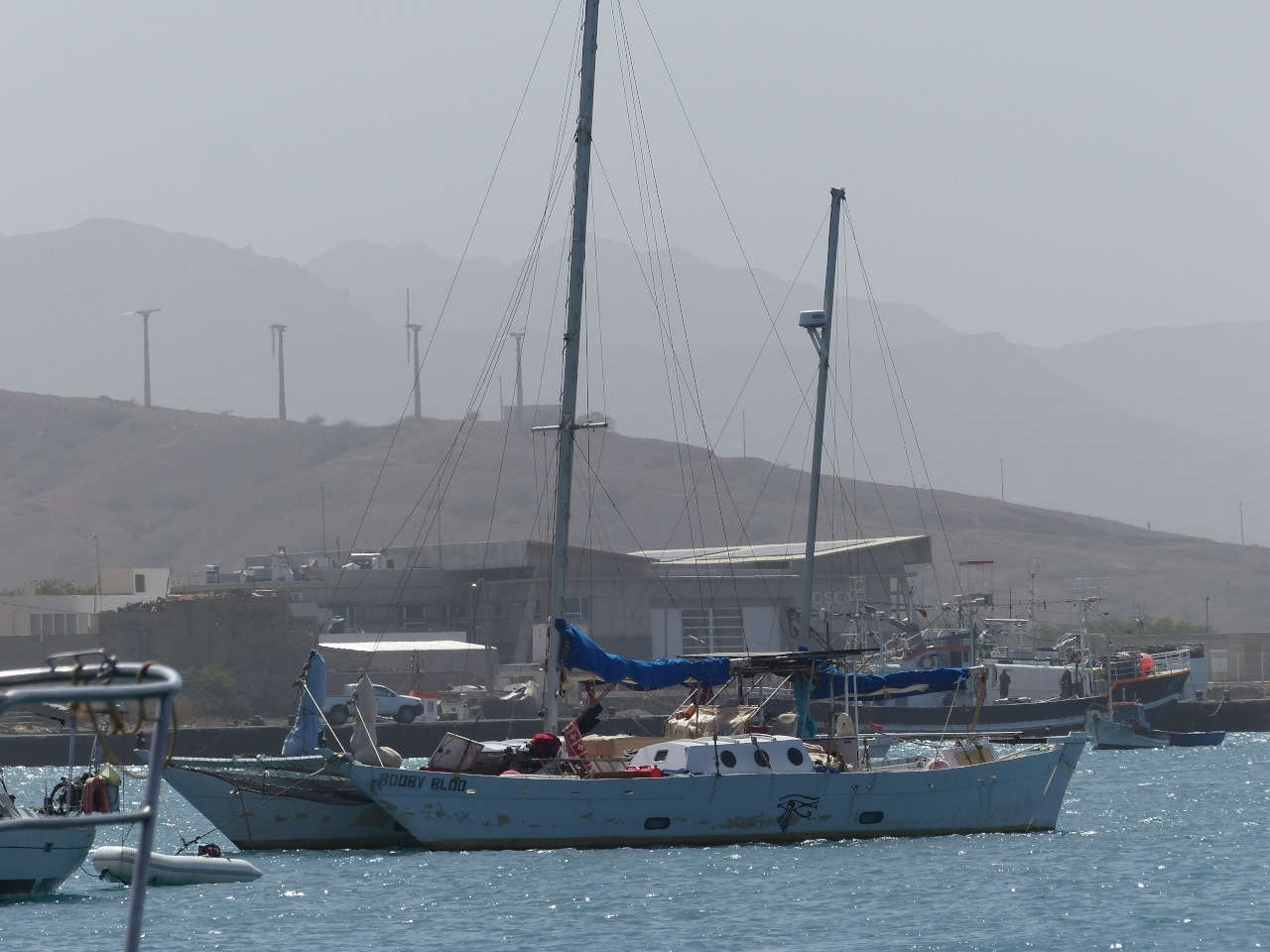December 2021. James had just died and I was deep into the organisation of the funeral and the big task of announcing his death to the world of yachting. Then three days before Christmas I received this message from our good German friends Petra and Berti aboard their 65ft Pahi 'Largyalo':
"Dear Hanneke, would it not be a good idea to sail with us across the Atlantic? 16 January from Lanzarote, end of month in Cabo Verde, mid to end February Guadeloupe."
It did not take me long to make a decision. Better to mourn and contemplate my life with James in the sun and warmth, looking out over the ocean waves, reliving the Atlantic crossings we made together, than being alone at home in the British cold and grey winter.
On 12th January I flew to Lanzarote, the most beautiful flight ever with clear skies all the way. Looking out of the window I could recognise all the harbours in Spain and Portugal that we had visited on our voyages. From Ribadeo and Coruna to Bayonna in Northern Spain. Porto, Nazaré and San Martinho on the West coast of Portugal. Then Lisbon and all the way to Cape St Vincent, from where I could see the Algarve coast from Lagos to Portimao. It was like Google Earth, only for real.
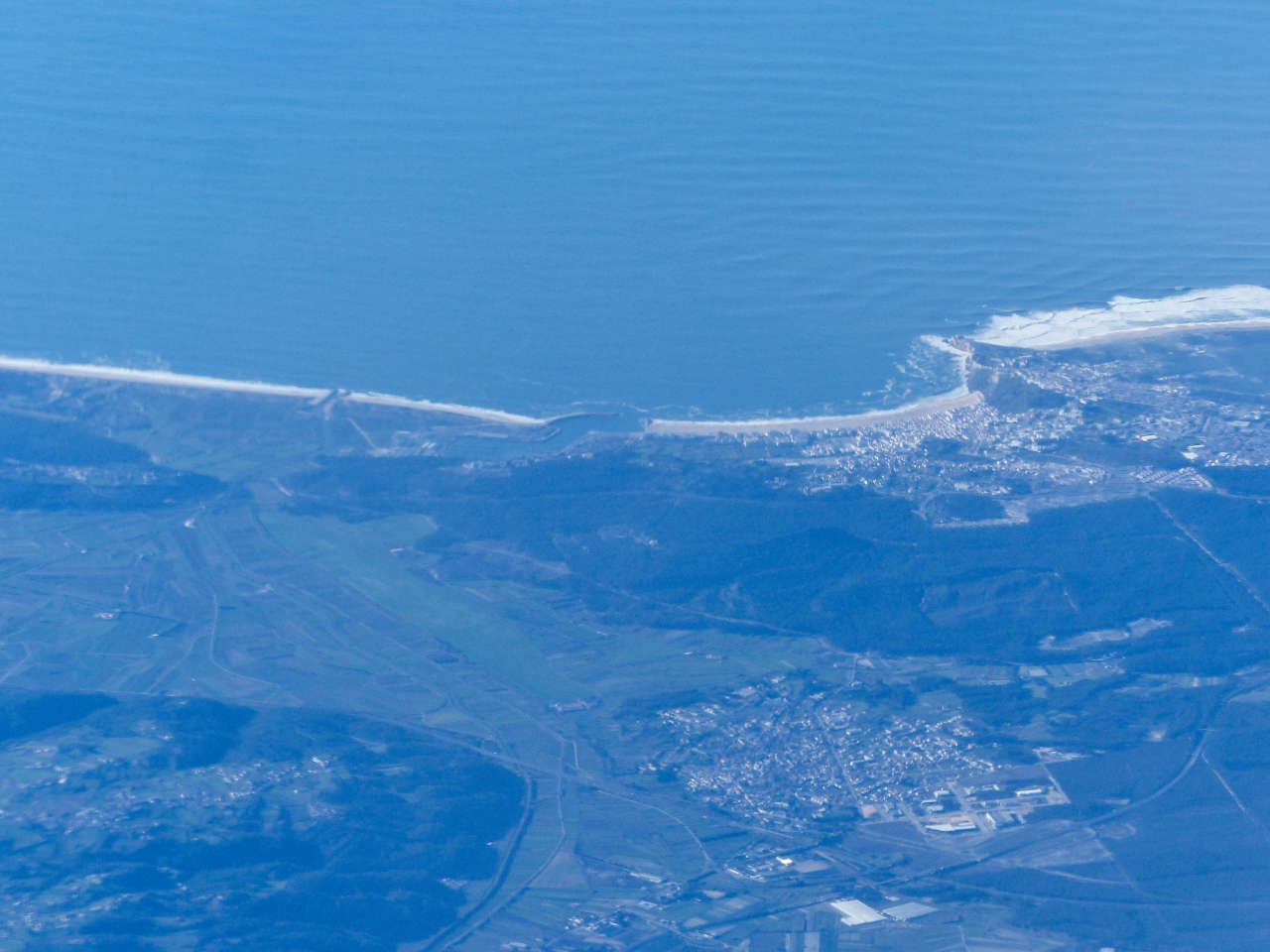
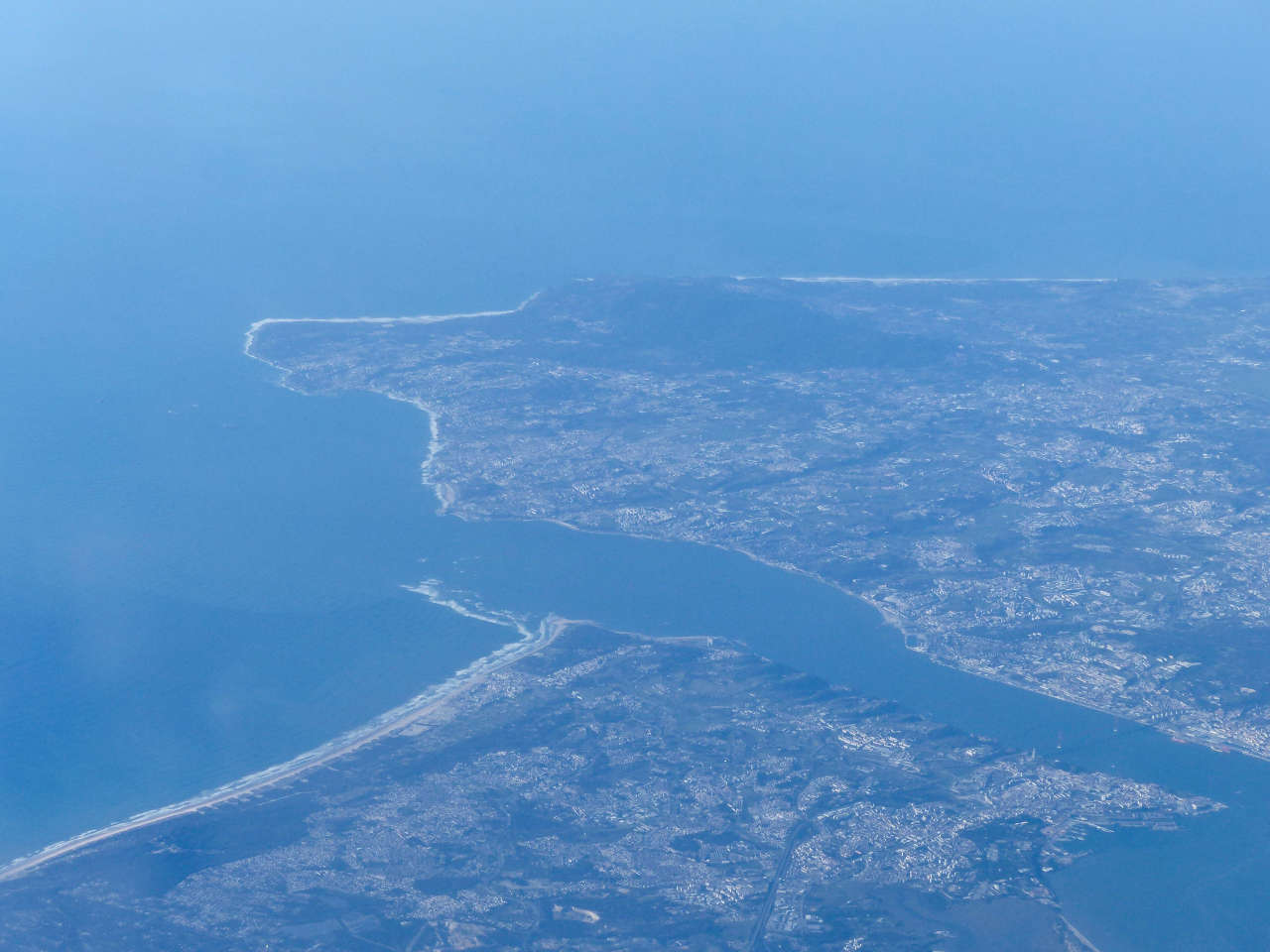
In Lazarote I first visited our surfing friend Sergio, who had been an active crew on Spirit of Gaia in the early 1990s. His house in La Santa overlooks the ocean and the big surf waves that it is famous for. The sun was bright and the ocean blue and glittering. One day Sergio drove me up to the North of the island to a view point looking out across to the island of La Graciosa. It had started to blow hard that day and it was difficult to stand upright in the buffeting wind, but the view was magnificent. I could see Playa Francesa where we had anchored with Spirit of Gaia in 1994 at the start of the El Guincho expedition (see People of the Sea).
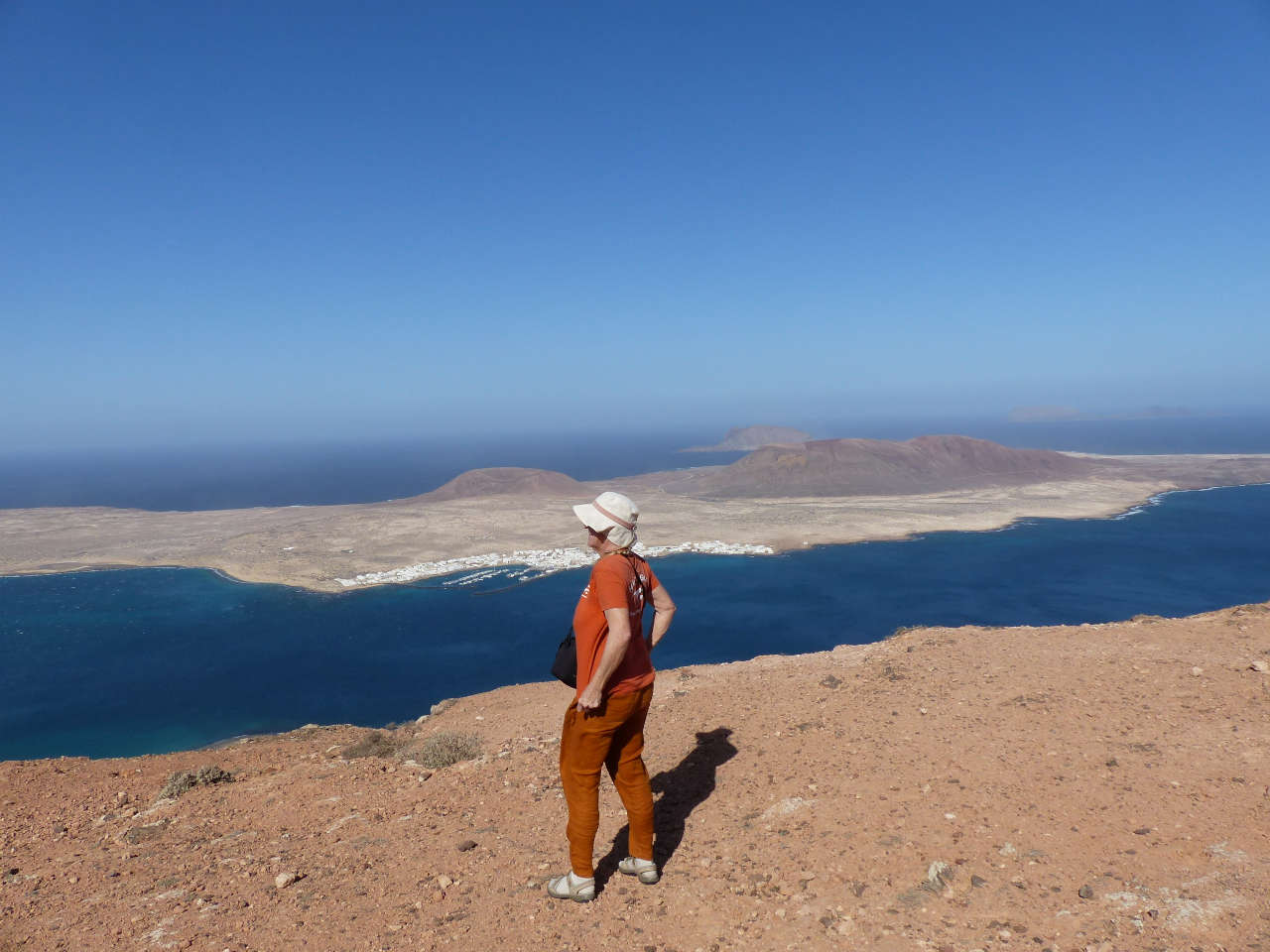
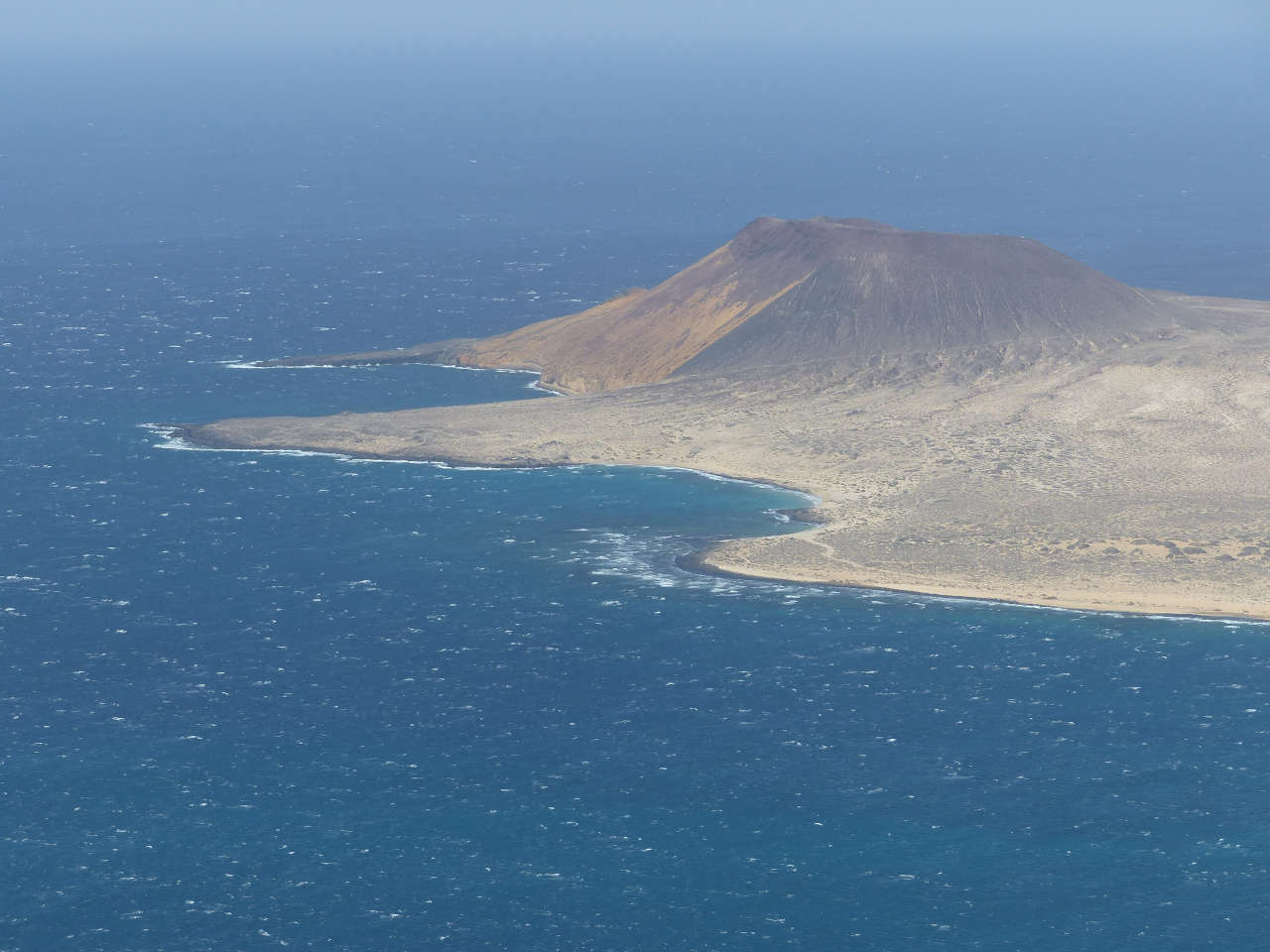
On the 17th we drove down to Marina Rubicon at the south tip of the island, where Largyalo waited. Waited is the operative word as the very strong wind was blowing from the South and was expected to blow for some time. The air was thick with Sahara dust. It took a week for that horrid wind to finally stop and turn back to the usual North. On the 24th we were able to leave and start our voyage.
We were a crew of six, Berti the captain with Petra as first mate. Three other German men were on board, friends Manfred, a regular crew member, and Lemmy, both with engineering skills. Wolfgang was an experienced sailor of catamarans and member of Multihull Deutchland, he planned to write about the voyage for a yachting magazine.
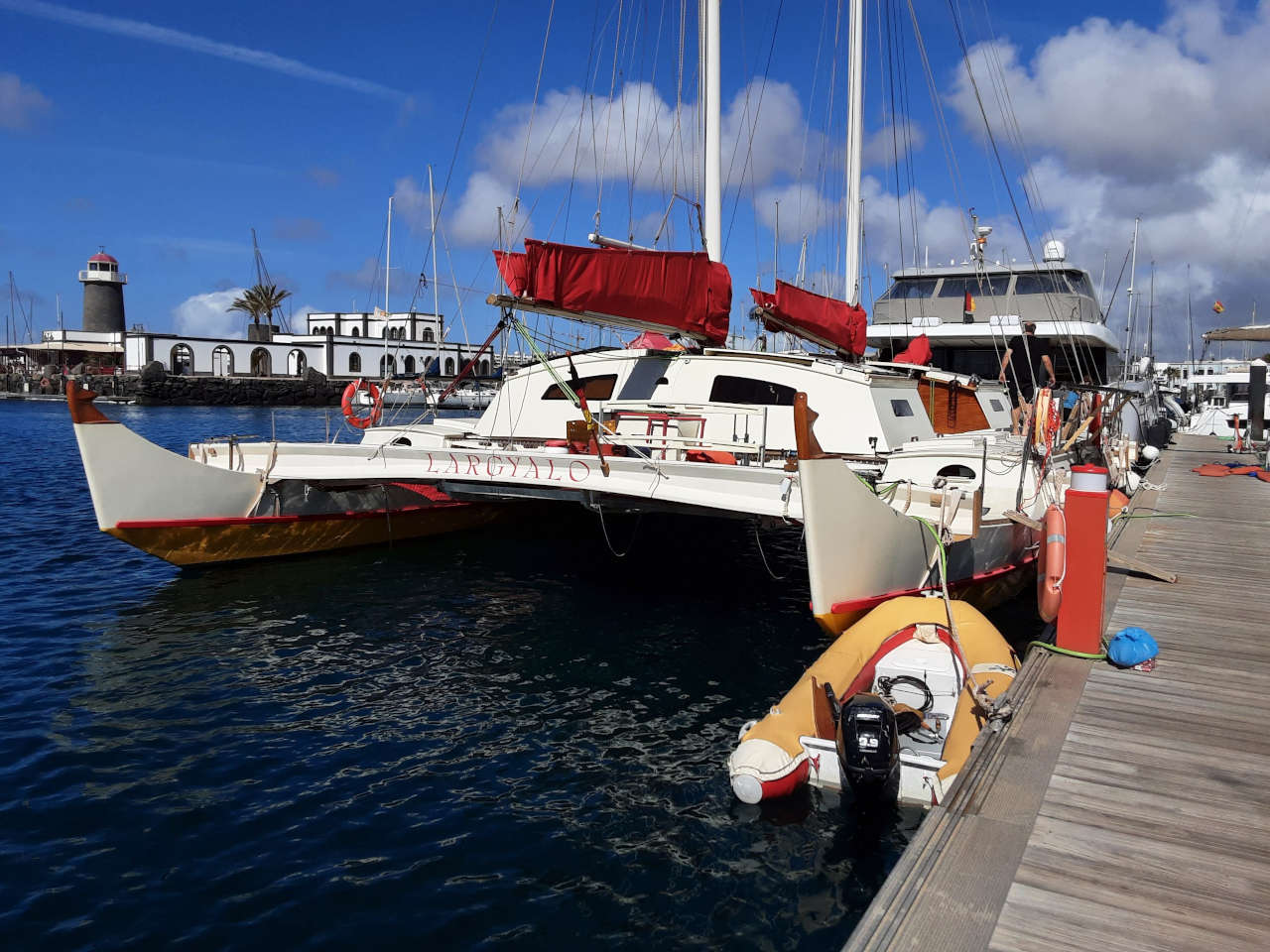
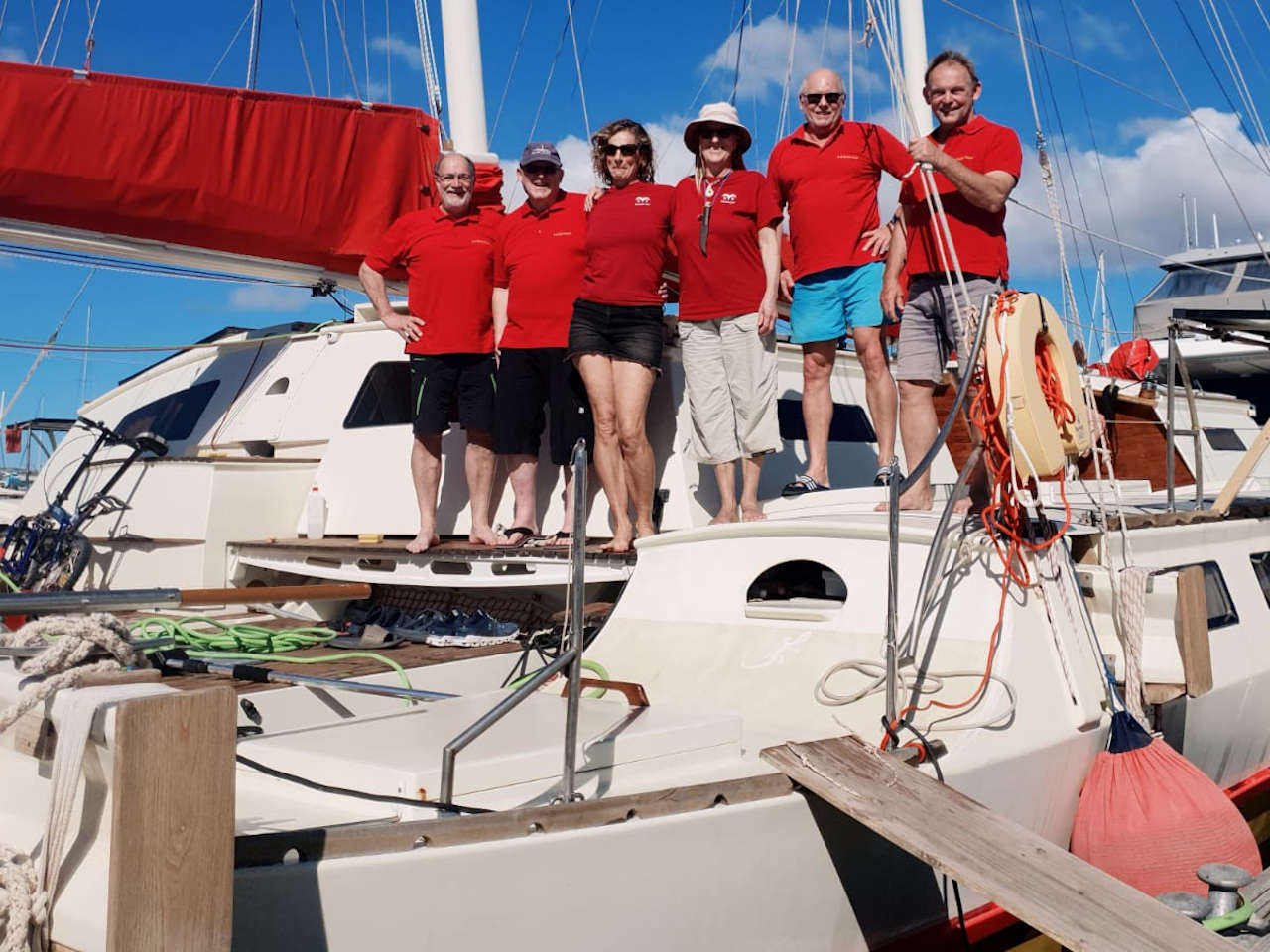
A Unique Ethnic Double Canoe
Our first stop was just across the water in Correlejo at the North tip of Fuerteventure. There we would meet up with Hans Klaar on his unique ethnic double canoe 'Ontong Java'. Hans was an old friend of James and I, ever since he sailed into Falmouth in 1990 on a Tehini he had bought in the north of England. He sailed 'Rapa Nui' to South Africa where he changed her rig to crabclaw sails and built cargo hatches. After some years trading round Madagascar he sailed her to New Zealand via Panama, where she was sold. 'Rapa Nui' is now being rebuilt in Northern Queensland.
Hans has since built two large (70ft) ethnic double canoes in West Africa. The first of which he again sailed to New Zealand, spending time in the Tuamotu islands, where the design of the canoe originated. Hans based both his 'Ontong Java' canoes on a detailed drawing by the French Admiral Paris, from around 1820 when these canoes still sailed in the Tuamotus. A model is in the Louvre and Eric de Bisschop's Kaimiloa was similarly inspired by this design.
Not long after we anchored, Ontong Java (the second one) came sailing into the harbour, she had been on a small beach round the corner for antifouling. She looked impressive under sail passing close round our stern. Inspections of both boats followed and a shared dinner. Hans was also bound for Cabo Verde and Guadeloupe, but would leave later than us as he was waiting for more crew to arrive. (More about Ontong Java in part 3)
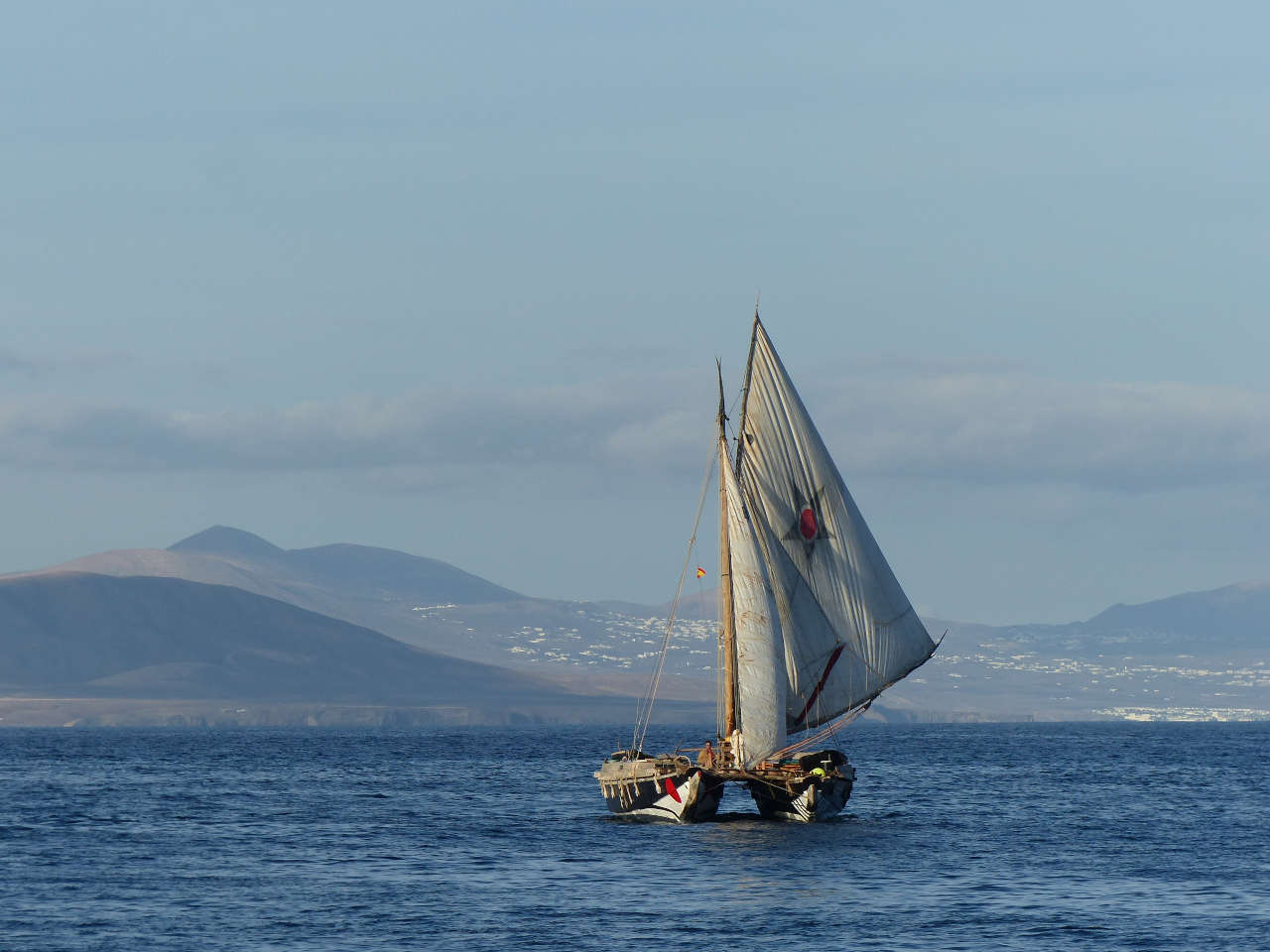

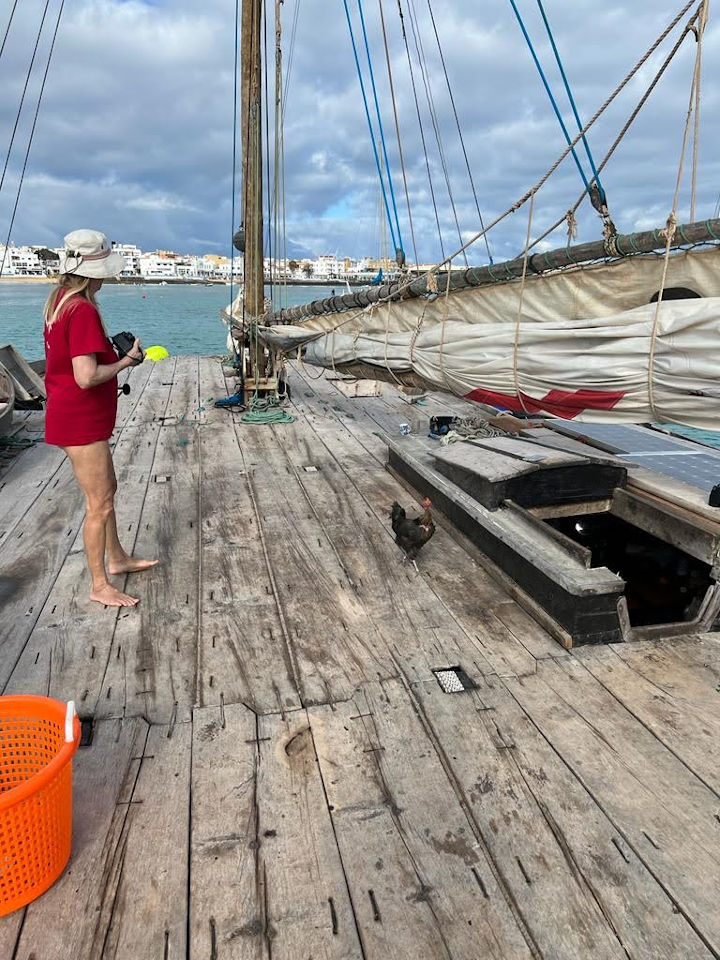
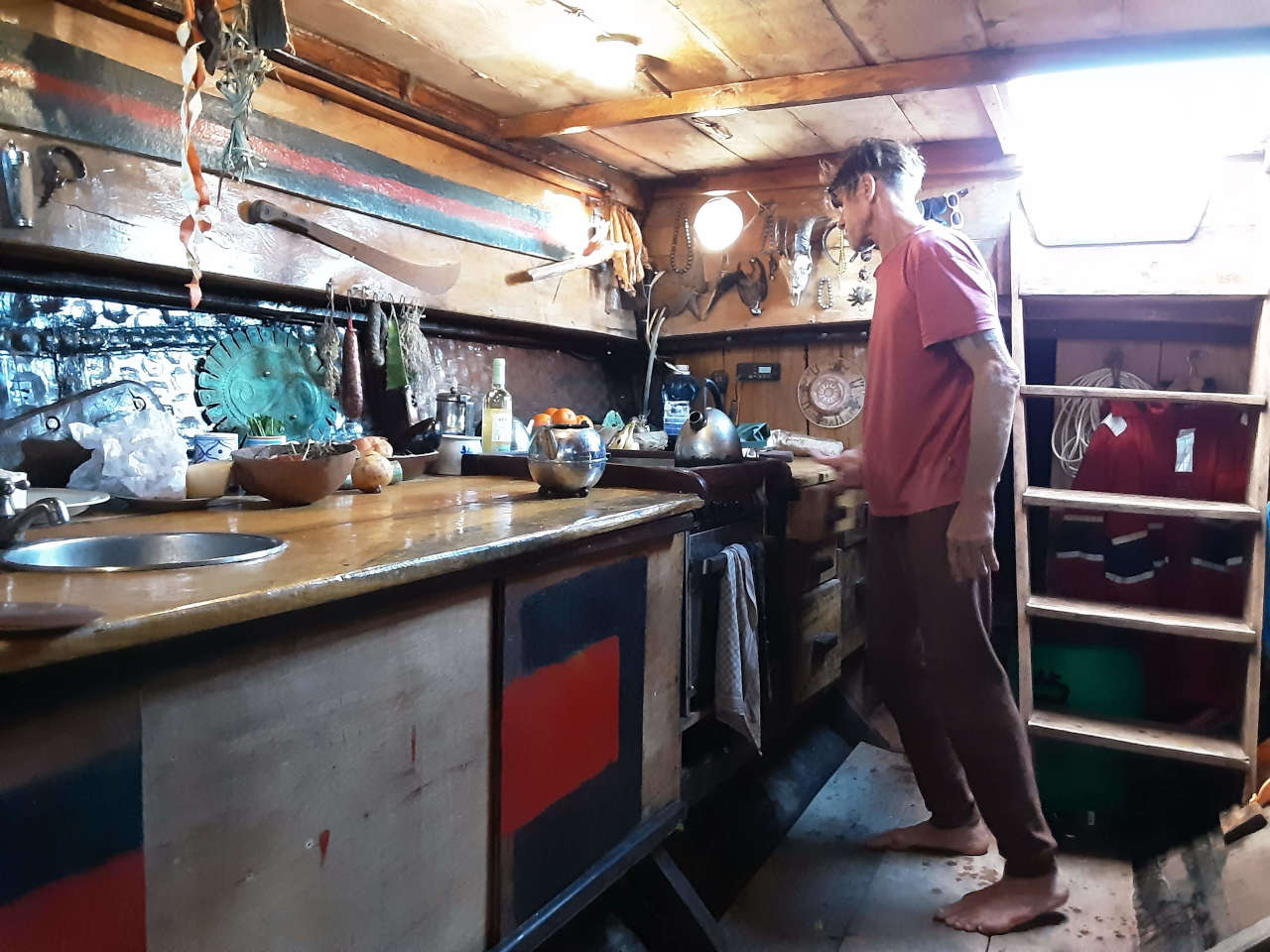
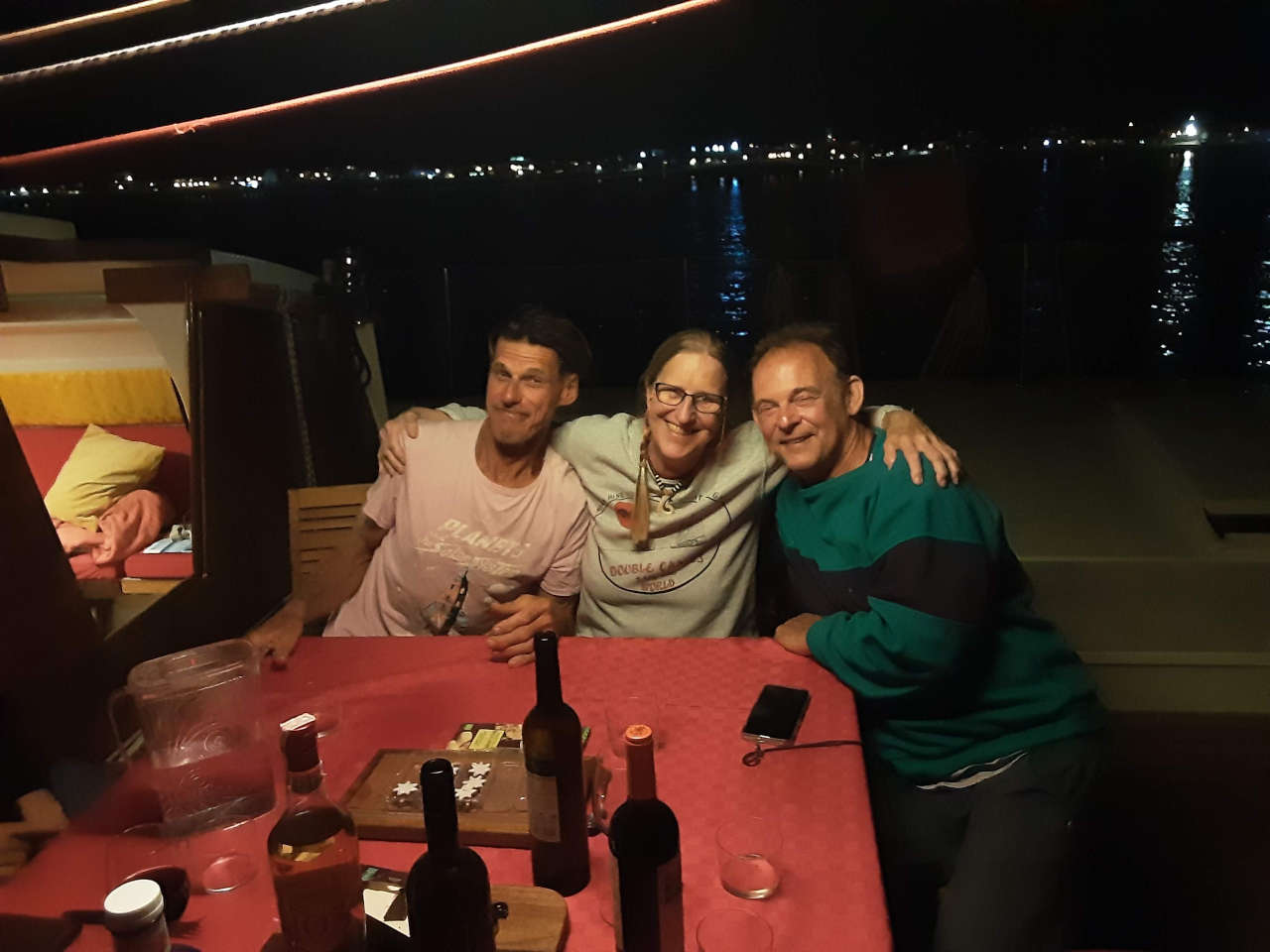
Departure
Finally we departed and cruised along the SE coast of Fuerteventura. I received my last emails whilst still within reach of a signal. To my surprise and delight I got one from the Ocean Cruising Club telling me James Wharram was chosen to receive a posthumous Lifetime Achievement Award. The award dinner would be at the OCC AGM in Annapolis on 2nd April! Would I be able to come and receive it? I quickly replied that I might be able to come, after all I would be on the other side of the Atlantic by then. I also wrote that I would like to consider it a joint award to James, Ruth and myself as James's life achievements would not have been possible without us three working as a team.
Largyalo is a well kitted out boat, very different from our simplistic Spirit of Gaia. I (and James) have always preferred keeping things down to basics, Spartan as some say. Our motto, the less systems, the less to go wrong. Our voyage round the world was proof of this. The only problems were with bits we had not made ourselves, outboard motors and instruments.
In contrast Largyalo has a large array of solar panels with regulators and batteries to match, operating an inverter and many electrical gadgets, including a powerful watermaker, water pumps, four electric toilets and a large fridge. She has two new lightweight SMART diesel engines (as in Smart car) with lowering props. Throughout my time on board the three men worked a lot on small mechanical and electrical problems. The tool and spares store is impressive.
My only task while waiting in Rubicon had been to check all the blocks, shackles and lashings, and to replace some halyards, sheets and reefing lines; the sort of work I love. Give me wood and rope any time. Petra and Wolfgang did all the food shopping, a whole fore cabin was turned into a food store, whilst Wolfgang's cabin became the wine cellar (he is a food and wine gourmet). Other dry stores were in the various sleeping cabins in the hulls.
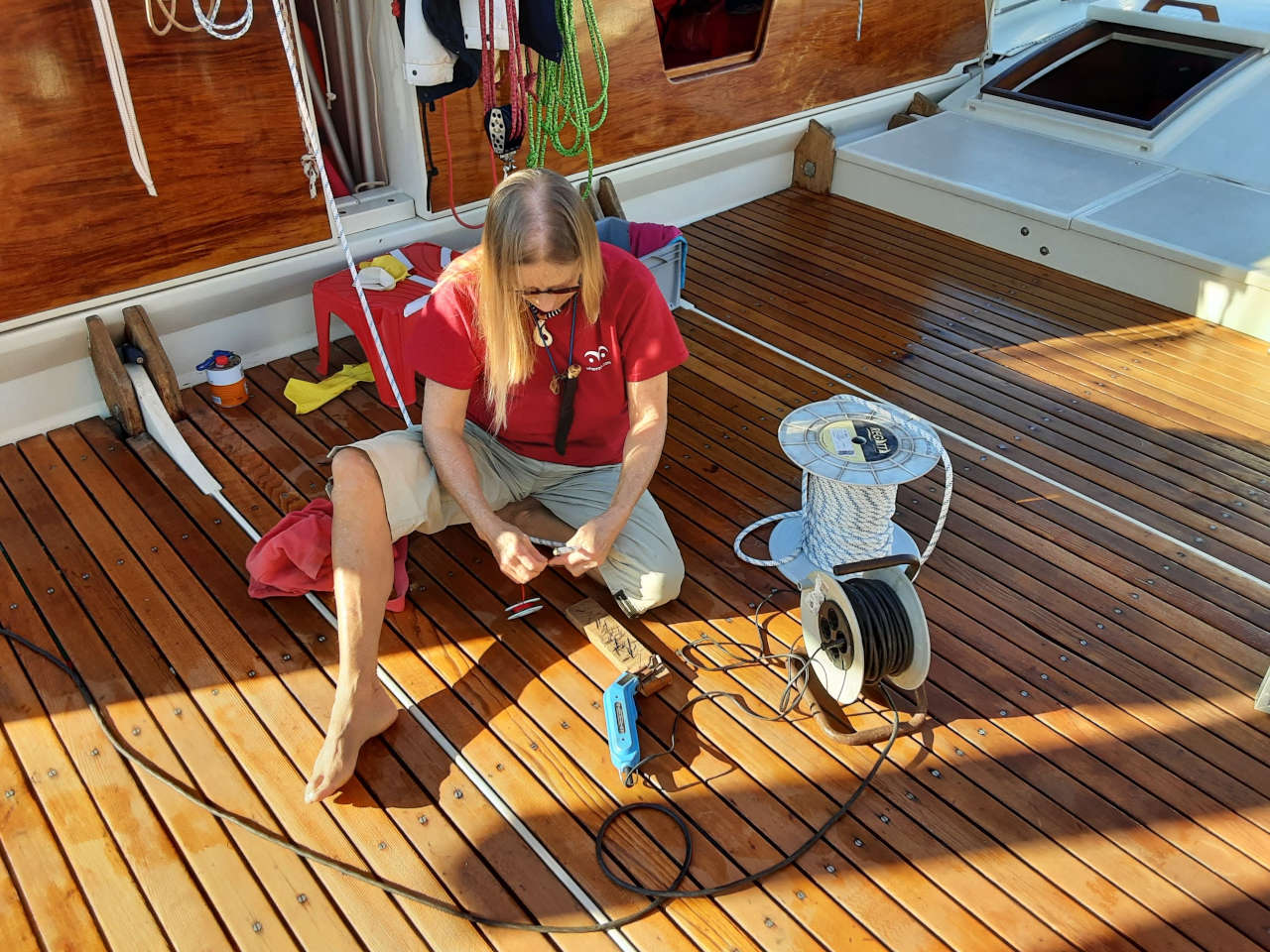
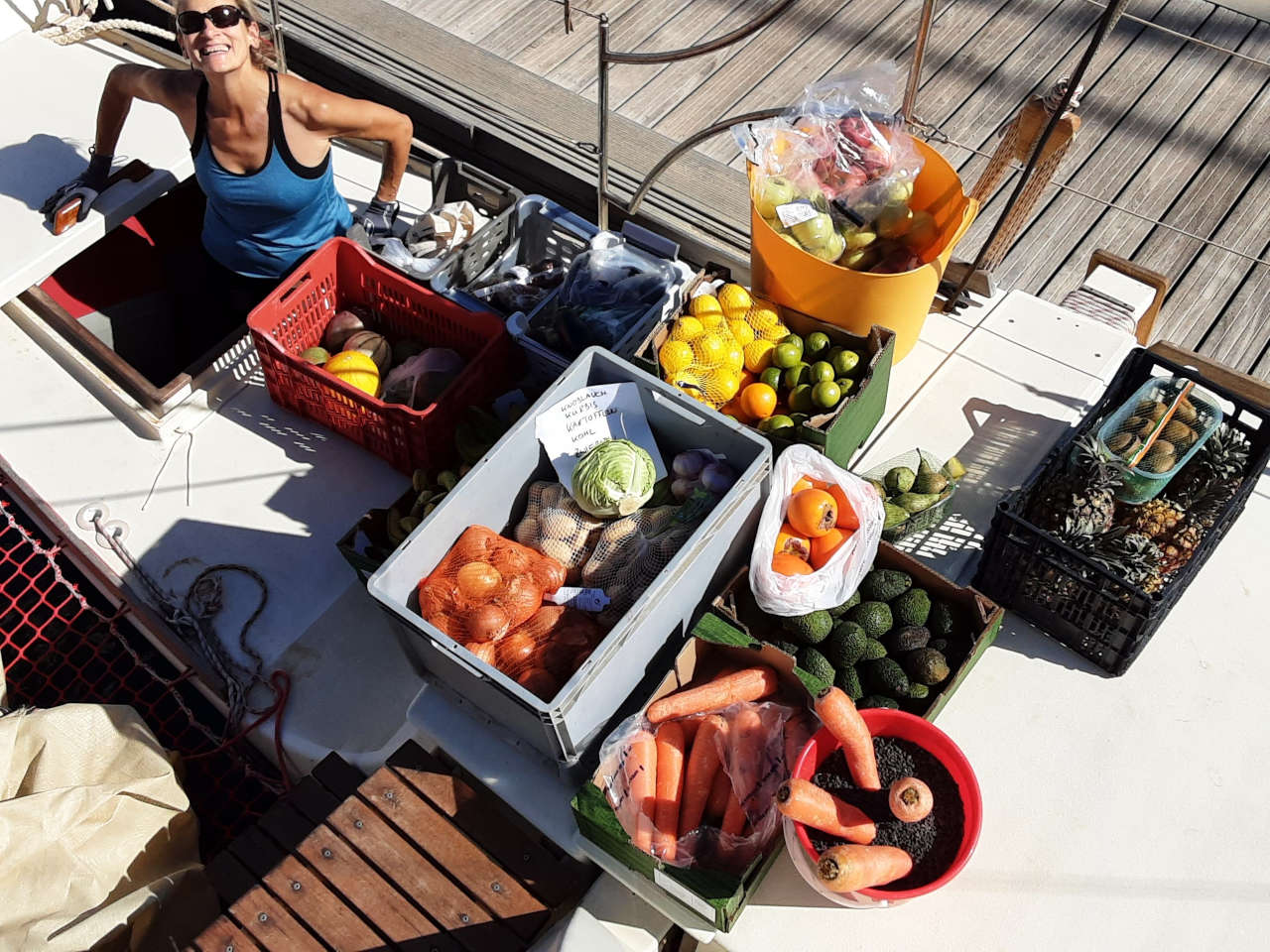
On Largyalo both hulls are allocated to guest cabins (3 doubles in each hull) and toilets, with storage in the bows and sterns. The working cabins are in the deckpods, with galley and saloon in the forward pod and the aftpod housing the cockpit/electrical control centre/tool store on one side and owner's cabin on the other. The hulls and the deckpods have all been increased in size to house this. Hence one can see the size difference between Spirit of Gaia and Largyalo on the photos taken in Greece last September when we last met up. The weights are also different, with Gaia at around 12 ton and Largyalo at 16.
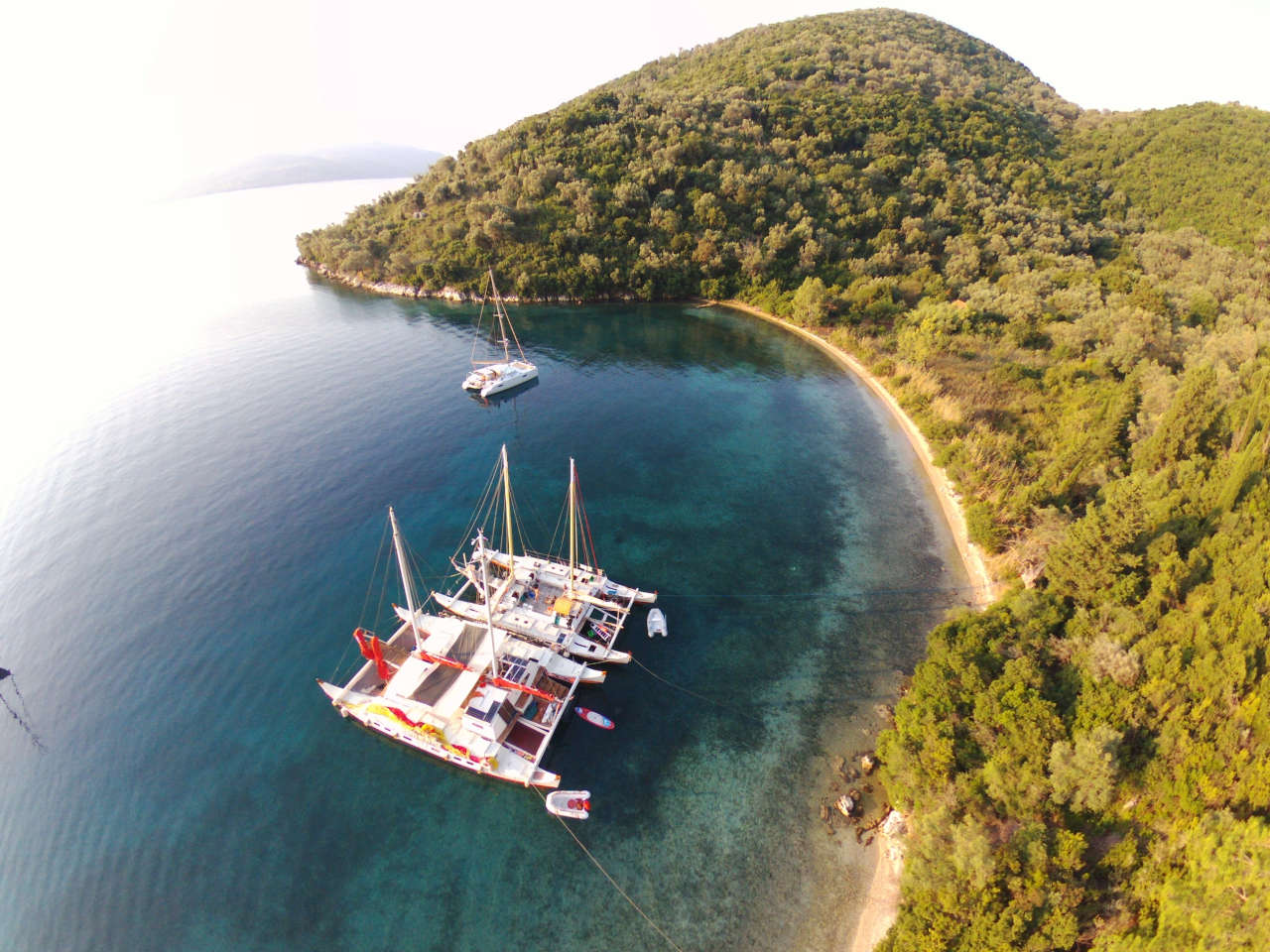
Voyage To Cabo Verde
The voyage down to Mindelo in Cabo Verde was not fast. On this passage one crosses the equator and consequent doldrums, so often very little wind. Most days one of the crew would write a short report, which was sent via satellite phone to Petra's brother for redistribution amongst a selection of friends and family. On the 28th January I wrote this:
"Today at 14.00 we crossed latitude 23 ½ degrees N and entered the Tropics. The weather has been very docile for the last two days, with boat speeds between 2 and 4 knots rarely a maximum of 5, we are now in the `Horse latitudes´, but Largyalo quietly sails on.
"So far we have taken down the spinnaker every sunset as there was often a bank of cloud ahead that could mean stronger wind. We replaced it with twin goose-winged head sails. We used the staysail and the Yankee the first night, but last night we replaced the Yankee with the larger old staysail that was still on board to try to get a little more speed, but in the early hours of morning we were again down to just 1-2 knots.
"After sunrise we hoist the spinnaker again and today I suggested the addition of the Yankee set off the mizzen along the port side to catch a little more wind without obstructing the wind into the spinnaker. We cannot set the main or mizzen for that reason.
"The highlight of today was the sudden arrival of a huge pod of small dolphins at about 3pm, just after we had eaten lunch. I was on watch and first saw a bird and splashes far out to starboard and thought it was a school of fish, but soon realised they were dolphins. There must have been at least 100 of them, some headed straight for our bows and there were easy ten or more dolphins under each bow at the same time. They were grey with spotted bellies and about 4-5 foot long, so they could be Atlantic Spotted Dolphins, though I thought those were bigger. Managed to film them, so when I am home I can check out which species they were. After about 15 minutes they all headed off to port, to continue their own lunch?
"The nights are still cold and I go out on watch in fleece lined long-johns, padded jacket and wooly hat. I had taken the long-johns out of a bag on Mana, but when I put them on the first night they were very large. I had brought James' long-johns and not my own! It is nice to know he has come with us. I tie a piece of rope round to hold them in.
"So far life is good on board, good food, good company. Covid and the rest of the world are left behind. I am relaxing and sleeping well, just what I needed."
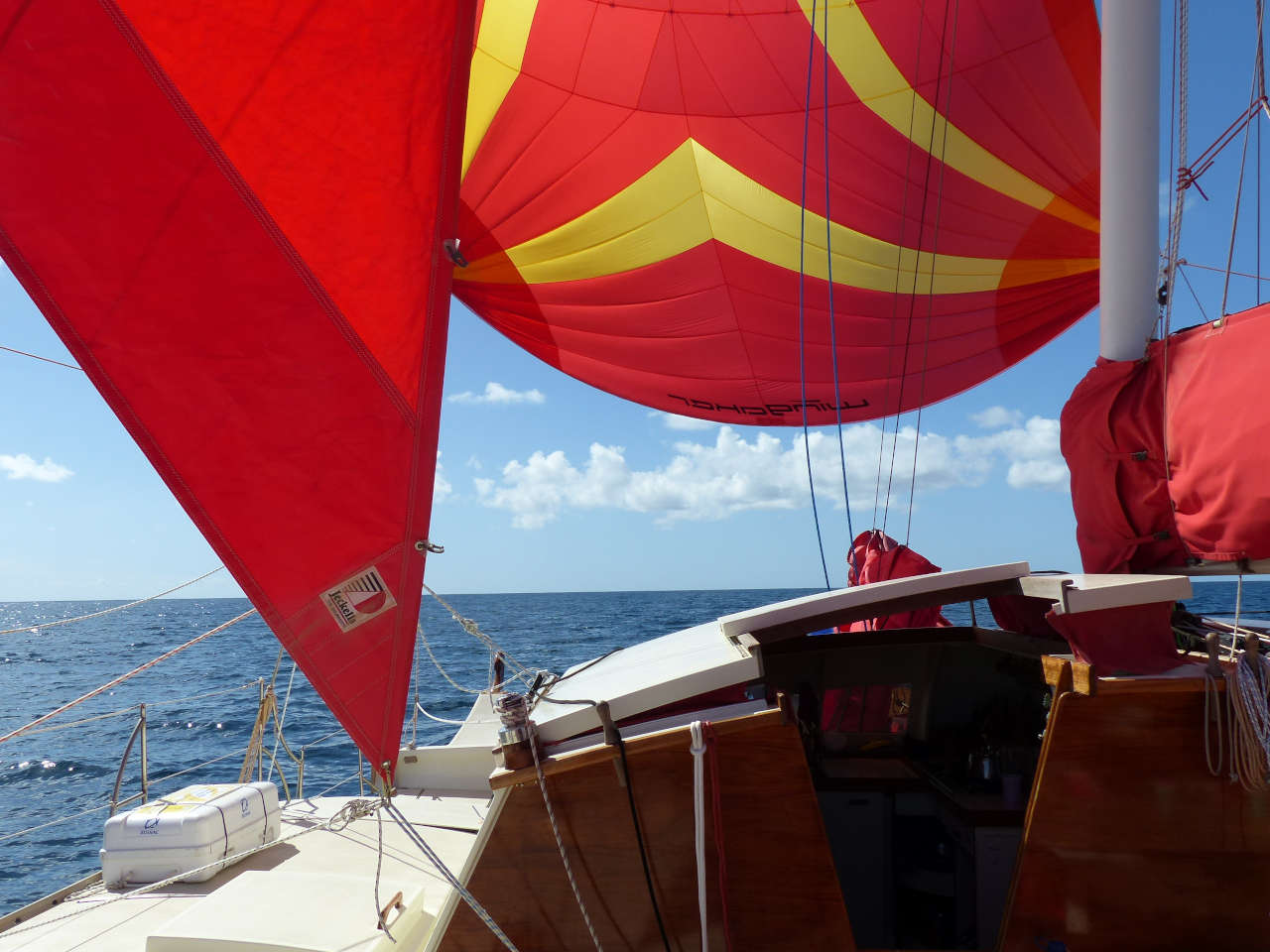
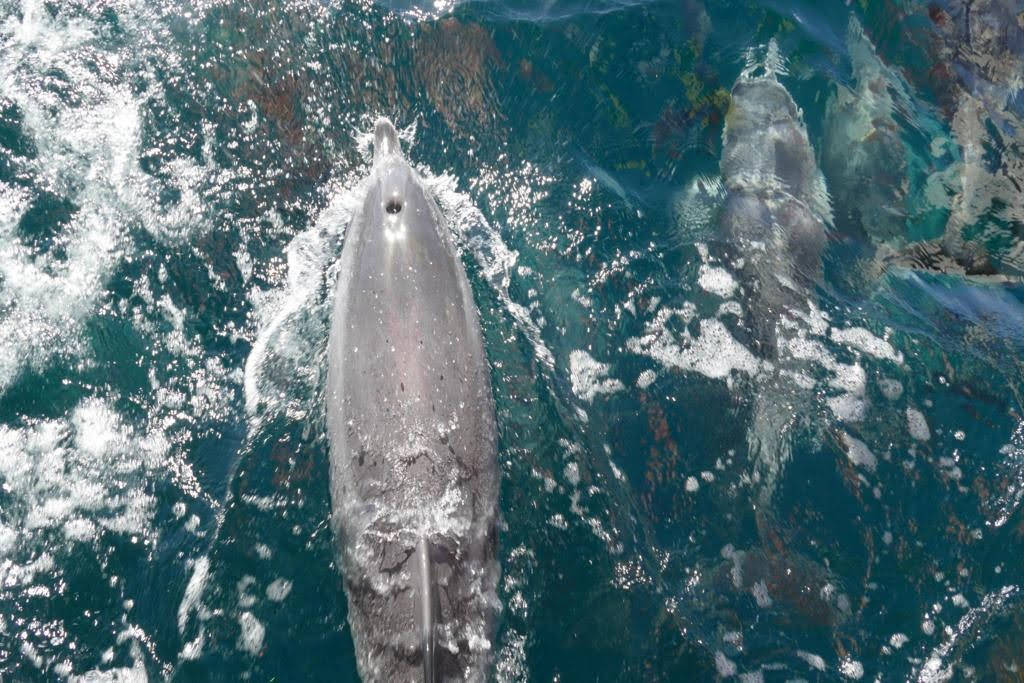
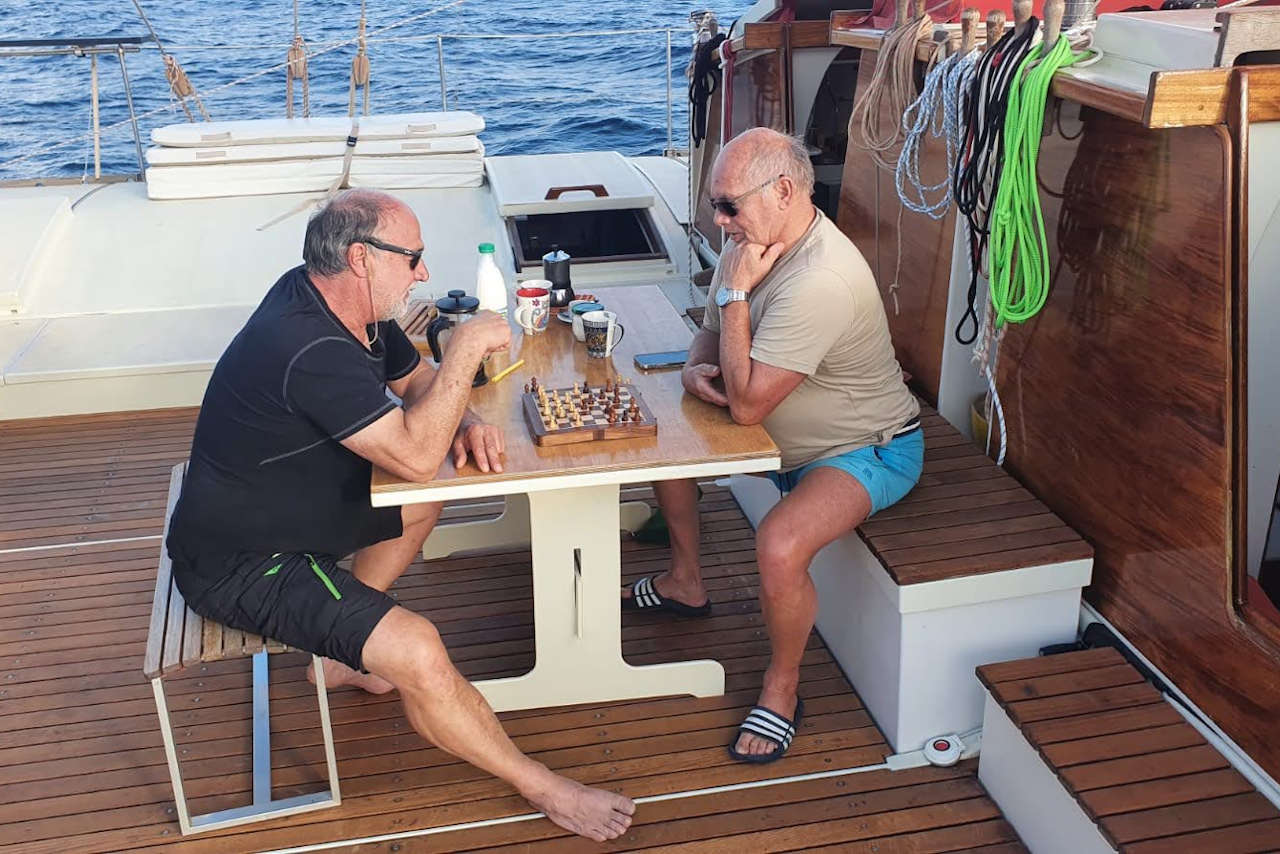
We arrived in Mindelo (Sao Vicente) on 2nd February. A strong Northerly with white capped waves chased us in. The island has high vertical barren cliffs on which the waves crash with white spume leaping high against the rocks. Not a friendly coast, no greenery anywhere, the air hazy with sahara dust. I spotted someone pointing a camera at us high on the bridge of a moored ship. Soon after a photo of Largyalo entering harbour was posted on the Wharram Catamaran Facebook page. A French Wharram fan had been behind that camera.



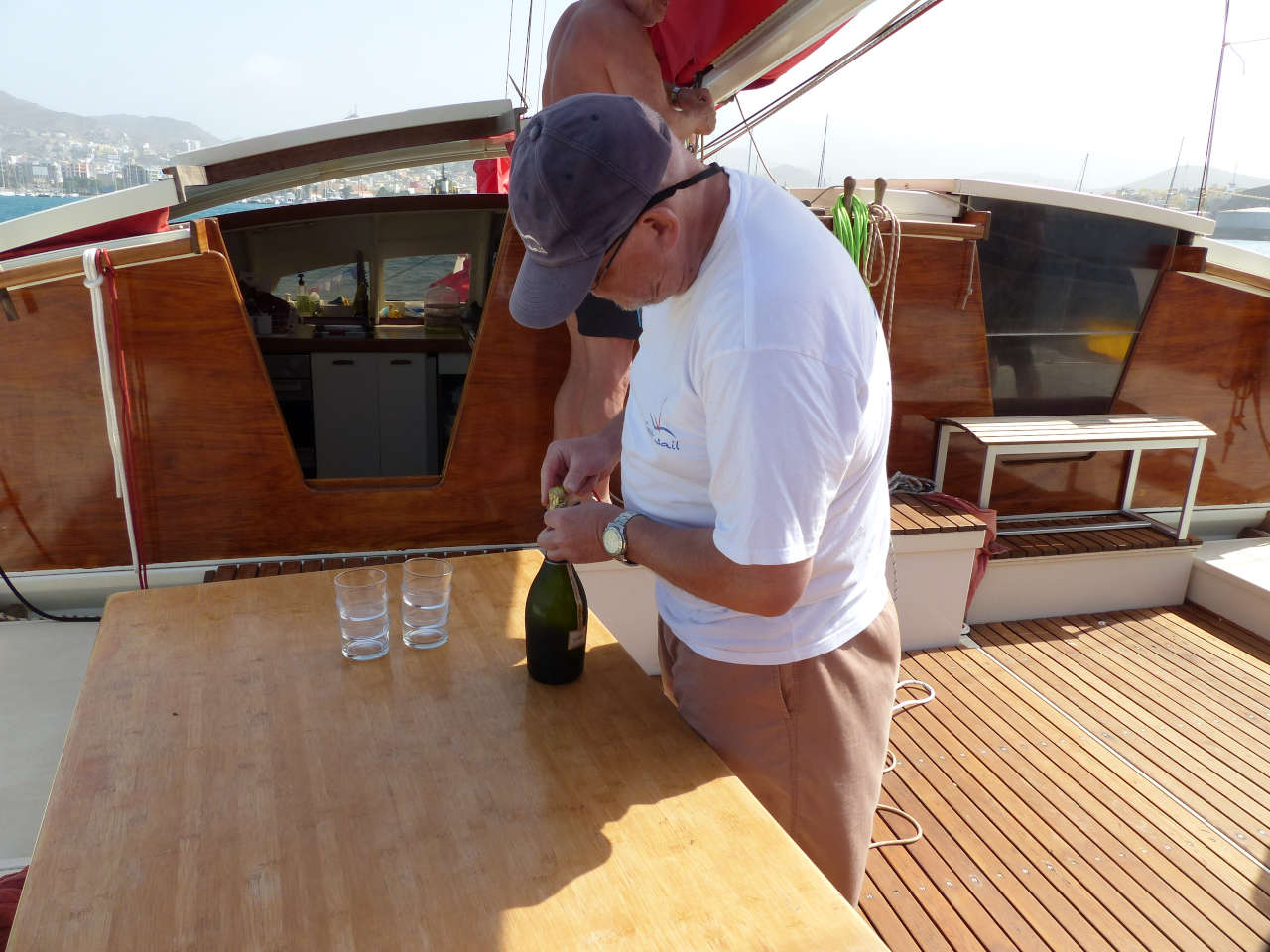
We spent 4 days anchored in very windy Mindelo (36 – 43 knots at times) It is a friendly town with Portuguese atmosphere and good fish and vegetable markets. Also anchored in the harbour was a Tehini, which I soon learned was called Booby Bloo, but had originally been Yin Yang, built in the 1970s in the UK by John Shore. We knew this boat as she was moored for many years up the Truro river. After many more years in Culatra, Portugal, she had been brought back to life and was owned by a Swiss couple. A strange coincidence was that the father of the Frenchman who photographed Largyalo once had been owner of YinYang. In Guadeloupe we learned that Booby Bloo had made the voyage to Barbados several weeks later.
